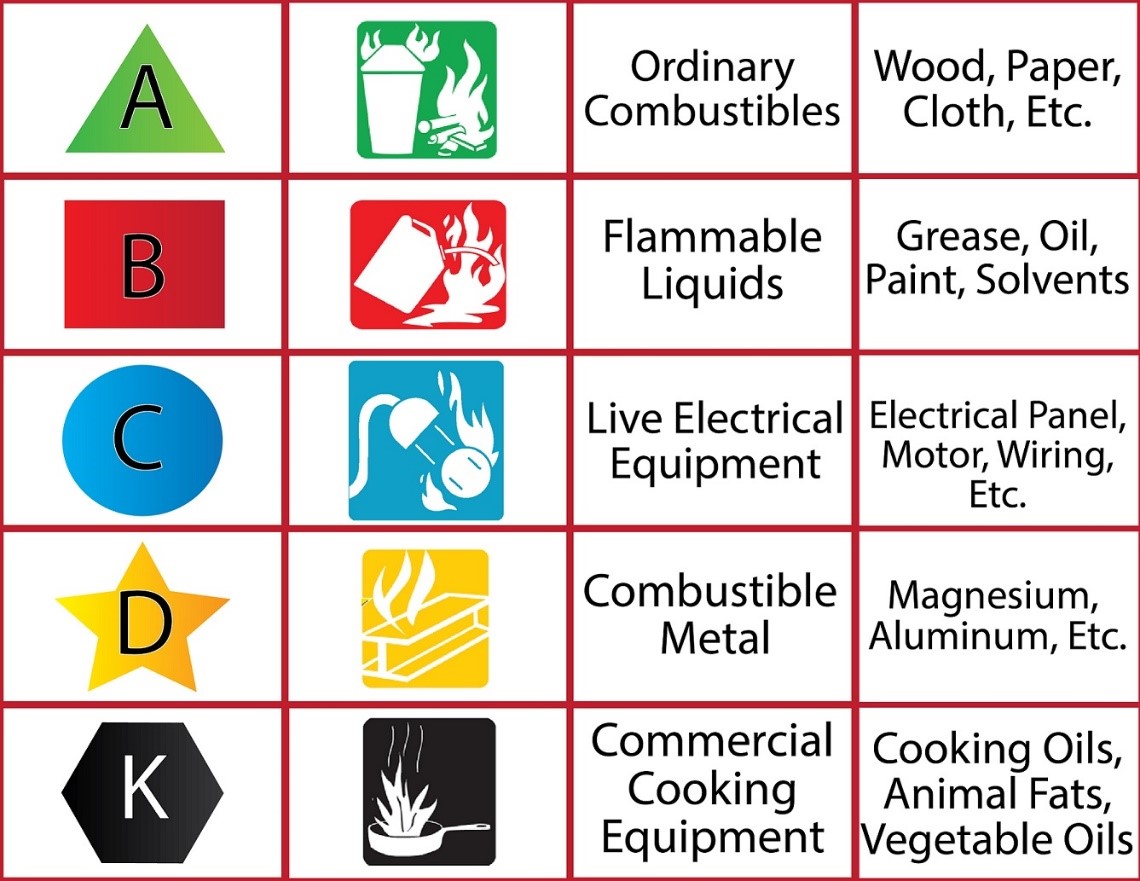Fire Extinguishers on Campus
The vast majority of extinguishers on campus are multipurpose, dry chemical units that are rated for use with Class A, B, and C fires. There are also carbon dioxide extinguishers on campus, which are rated for use with Class B and C fires.
Type K extinguishers are installed on campus in areas of commercial cooking operations. Typically, these are only accessible to staff members assigned to that area.

- Class A – Use on fuels such as wood, paper, plastic, rubber, and cloth
- Class B – Use on flammable liquids
- Class C – Use on electrical equipment
- Class D – Use on combustible metals (magnesium, potassium, titanium, etc.)
- Class K – Use on combustible cooking media
When confronted with the decision of to fight to use a fire extinguisher or evacuate the building, you need to evaluate the size of the fire, classification of fire (A,B,C,D), training received, and the time needed to evacuate occupants.
Never attempt to fight a fire if you do not have extinguisher training. If you are trained with extinguishers, consider the following:
Questions to Ask Yourself
- Do I have a reliable escape route?
- Is the fire small enough to be controlled by a portable fire extinguisher?
- Rule of thumb is to not fight a fire larger than a small office trash bin.
- Do I have the right extinguisher?
- Am I safe from toxic smoke and gases?
- Do my instincts tell me I am safe to fight the fire?
- Do I have the training necessary to extinguish the fire?
If you do not feel comfortable trying to extinguish the fire, evacuate the building and let the fire department do their job.
Extinguishing the Fire
If you decide to attempt to extinguish the fire, take the following actions:
- Activate the fire alarm system to notify building occupants of the emergency
- Notify 911 or SMU Police at 214-768-3333 or instruct someone to else to call. SMU Police dispatch will notify University Park Fire. *Note: Dialing 9-1-1 from a cellular device may not connect you to the appropriate jurisdiction
- Position yourself between the fire and your escape route, approximately six to eight feet from the fire
- Remember the acronym P.A.S.S.:
- P – Pull the pin that unlocks the operating handle
- A – Aim the extinguisher low at the base of the fire
- S – Squeeze the lever on the extinguisher to discharge the contents
- S – Sweep the nozzle or hose from side to side, and continue to sweep the extinguisher back and forth at the base of the flames until the fire is out or the extinguisher is empty
After the Fire is Out…
Evacuate the building, and inform first responders of the location of the fire.
Not Extinguishing the Fire
If you do not attempt to extinguish the fire, evacuate the building. During evacuation you should take the following actions:
- Evacuate the room and close the door behind you to confine the fire
- Activate the fire alarm system to notify building occupants of the emergency
- Notify SMU Police at 214-768-3333 or call 911
- Evacuate the building
- Remain outside until notified by first responders or a University Official that the building is safe to re-enter
Extinguishers are kept in the following locations:
- Fire Hose Cabinets - large, red metal cabinets commonly located in the walls of exit corridors.
- Fire Extinguisher Cabinets - smaller, less-conspicuous cabinets located in exit corridors and recessed into the walls.
- Wall-mounted Brackets - Fire extinguisher mounted on an approved bracken when not stored in cabinets. This method keeps extinguishers in plain view on the walls